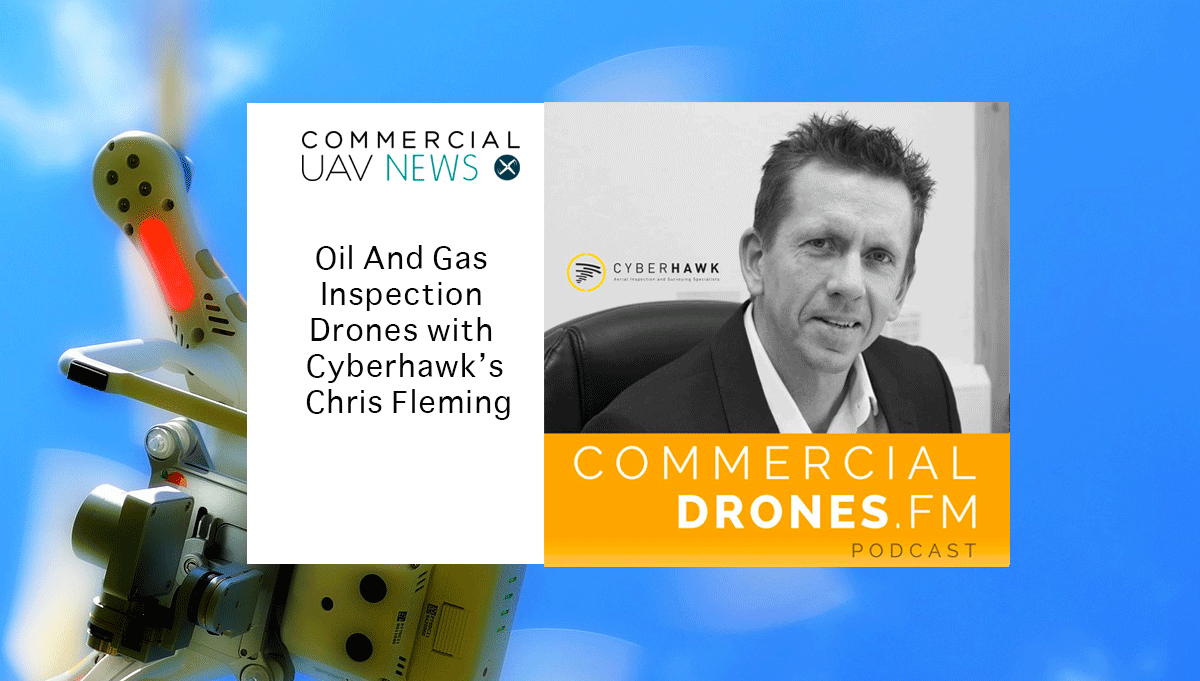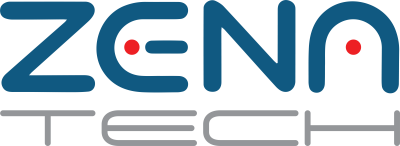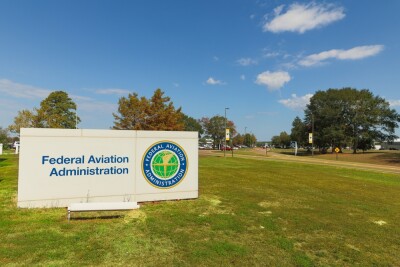Many professionals only began to realize the potential impact of drone technology in the past few years, but organizations like Cyberhawk have been focused on the where and how the technology could make a difference for far longer. That experience and focus has been a major factor in the company being able to complete more than 25 world firsts since their inception, which includes firsts for oil rig inspections, wind turbine inspections and transmission tower inspections.
On episode #50 of the Commercial Drones FM podcast - Oil And Gas Inspection Drones with Cyberhawk’s Chris Fleming – host Ian Smith sits down with Cyberhawk CEO Chris Fleming to discuss that history as well as the bottom-line difference the technology has made in terms of being able to save oil and gas companies $1.5 million per day in recovered production costs.Ian connected with us to further discuss a few things from the episode, including more info about his own experience with Cyberhawk, what it really means for a drone to create efficiency and what the concept of technology that is disposably priced will mean for Cyberhawk. Read through the additional insights before or after listening to the podcast below. You can also listen to the episode on iTunes or GooglePlay. Jeremiah Karpowicz: You mentioned your personal history with Cyberhawk as you came across them when you were doing research associated with starting your own drone service company in 2013. Can you talk a little bit about what it meant to you to discover a company with this sort of focus and dedication in light of the research you were doing at the time? Ian Smith: Cyberhawk was a huge inspiration to me during the year prior to me officially joining the drone industry. There wasn't much content out there in 2012/2013 about commercial drones and so Cyberhawk's focus on oil and gas, usage of top-of-the-line Ascending-Technologies Falcon 8 drones, and professional attitude served as somewhat of a company role model for what I wanted to achieve. They've done a great job. Chris really simplified the issue when he talked about the fact that he’s focused on inspecting things and delivering an inspection report. He mentioned that so many companies don’t understand what they need to deliver to meet expectations. In your experience, what’s the root cause of this? Is it related to unrealistic expectations a client might have of the technology, or more associated with service providers that aren’t able to deliver information their clients need? My thoughts on the misconception of client deliverables can get complex but I believe it stems from the hype and "promise" of drone technology. This is apparent in agriculture but really starts to become obvious for inspection activities surrounding vertical infrastructure or oil and gas. It's absolutely crazy that a drone of relatively modest cost can provide potential $1 million plus daily savings for certain oil and gas clients. Those massive amounts of money seem to trigger something in people to think that they can just grab a drone, fly it up, deliver some images, and collect checks. I know this is true because I was one of those people. There is much more to it than taking pictures and videos and delivering them. There's almost an art that comes with developing these intricate reports and supplying expert recommendations that someone without that direct experience just can't provide. I’m not sure Cyberhawk envisioned they’d be inspecting industrial chimneys in 2008, but doing so really defines the benefits associated with efficiency and safety of UAVs that we’re always talking about, don’t you think?The chimney inspection use case is one of the first times I really understood how effective flying robots can be. The massive savings that can be delivered to asset owners in saved costs (1+ million bucks per day) is staggering. I definitely think that's one of the reasons that Chris joined Cyberhawk and why they started the company in the first place. A lot of ideas like these stem from when someone has intimate knowledge of a problem—they dream up innovative solutions. Speaking of which, I often find myself talking about the “efficiency” drone technology represents, but that’s a concept Chris really quantified when he mentioned the difference a drone can make in terms of shutting down a flare for a manned inspection as opposed to using a drone and allowing the flare to remain operational during that inspection. Do you think service providers are doing enough to quantify what this difference can mean to the bottom line for an organization?It all depends on the industries that the service providers are targeting. Companies like Cyberhawk and Sky-Futures are laser focused on oil and gas asset inspection so the value that they can articulate and efficiency of their operations makes a lot of sense to their target customers. Oil and gas operations like theirs are not as accessible to the layman so the quantification of efficiency figures like that are just not as widespread. In regards to the industry as a whole, I think that there have been some efficiency figures that may have even been exaggerated too much in order to try to gain attention. Looking back at 2014, 2015, and parts of 2016, businesses were still looking for excuses to get drones—it's only in the past 24-months or so that I feel the disruption that our industry provides has been taken up to the highest echelons. You talked with Chris about the hardware that Cyberhawk is using, and the concept of drones being disposably priced came up. How do you see that concept impacting the way in which companies like Cyberhawk move forward? I can actually see Cyberhawk moving into using more and more expensive drones—it'll just depend on what the use case is. I love the fact that they're sending specialized drones into tight areas that "normal" drones couldn't even hope to ever emerge from. Those specialized drones are going to become cheaper over time but more and more specialized platforms will emerge which should keep things fresh. At the end of the day, the only thing I really want to say about this is that the ubiquitous DJI drones like Phantom and Inspire are going to soon seem quite bland. They're incredibly good at a few things and above average at many others. But as the technology becomes more accepted and widespread, the niche drones with robotic arms, capable of sniffing out chemicals or autonomously navigating in dangerous environments are going to be winning the hearts and minds of commercial operators.Subscribe
The information you submit will be stored and used to communicate with you about your interest in Commercial UAV News. To understand more about how we use and store information, please refer to our privacy policy.
August 2, 2017
Using Drones to Develop Intricate Reports and Supply Expert Recommendations - Commercial Drones FM Podcast Insights
















Comments